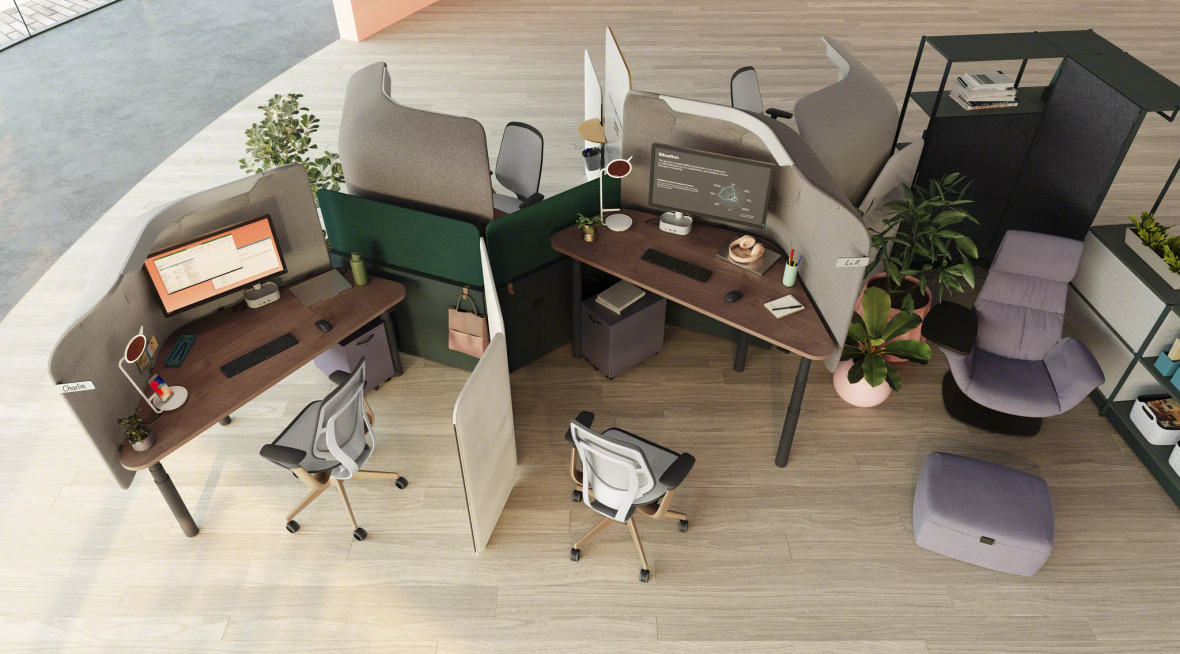We use cookies to maximize your online experience with us. By closing this window, you consent to our cookie policy. You can change your cookie settings in your browser any time. For more information, please see our Privacy Policy located on the footer of this site.
2023 Workplace Trends for Changing Work Models

The full article, Dealing with Changing Work Models: 2023 Workplace Trends, was originally published in Independent Dealer magazine in the December 2022 – January 2023 issue.
Written by Valerie Santanasto, Vice President of Sales
To be or not to be in the office – that is the question facing thousands of organizations in 2023 as companies try to balance the perceived benefits of in-office work with the demands of employees who prefer working from home or at a location other than the office, at least on a part-time basis.
While no one can predict what the new year holds in store, it seems fairly safe to say that hybrid work models are here to stay. And that’s not a bad thing, given the results of several recent studies. In a report by McKinsey, 87 percent of employees indicated they would like the opportunity to work more flexibly if their employers offered it. Slack, meanwhile, found that flexibility is the key reason why employees are attracted to a hybrid work model; while 57 percent of respondents to a YouGov poll said they wanted the option to work from home.
With workers increasingly expecting a degree of choice in where to work, many businesses have realized that-like it or not-they must offer some form of remote or hybrid working if they wish to continue to attract top talent. And experience suggests this needn’t affect the bottom line: worker productivity remained high when employees had no choice but to work from home at the height of the pandemic and has remained high since the world has returned to something approaching normal. As for employers, they are no longer bound by geographical restrictions and so can choose from a broader pool of potential workers that, in theory, can live anywhere.
The question that remains for many organizations as we enter 2023 is: how do we ensure remote and hybrid workers remain engaged? How can they feel like they are part of the team when they are living and working, in some cases, half a world away? How can we still onboard, train and mentor? How can we ensure people have the same experience regardless of where they are? In short, how do you make hybrid work actually work?
To ensure that remote and hybrid workers “are always first-class participants,” in the words of Microsoft CEO Satya Nadella, technology upgrades will be a high priority – and depending on the number of remote workers, a potentially significant expenditure – in 2023. While bad lighting, poor audio, and distracting backgrounds could be tolerated in the early days of the pandemic, they are no longer acceptable in a professional setting. Moreover, inadequate equipment can lead remote workers to feeling disengaged, which can reduce their productivity while increasing the perception of them by in-office employees as something less than true professionals.
To create better workplace experiences that ensure all workers are engaged and collaborating, regardless of location, expect more employers in the year ahead to:
- increase expenditures on state-of-the-art audiovisual solutions that are easy to use, to ensure that all employees (whether in-office or remote) look and sound good when participating in videoconference calls, and support both bring-your-own-device and bring-your-own-meeting features;
- add in-office technology solutions that enable content to be easily captured, digitized, and shared with remote participants;
- provide remote employees with home office solutions, including work tools and video conference kits equipped with headsets, mics, and ring lights, to ensure they can be as comfortable and productive as their in-office colleagues;
- reconfigure office spaces so that in-office employees have a variety of equally productive spaces – from large conference rooms to huddle rooms to pods, each equipped with videoconferencing technology – from which to choose as most appropriate for the task at hand.
Beyond technology solutions, 2023 will likely see more employers budgeting for training so that employees can fully leverage the technology at their disposal. And because hybrid and remote work opens the door to an increased threat to data security, expect organizations to place greater emphasis than ever before on corporate cybersecurity and resilience. This will translate into the introduction of security features such as multi-factor authentication, least privilege access, and anti-malware solutions, as well as the need for software to be kept up to date.
Businesses will also pay more attention to furniture solutions that give employees choice and control over where and how they work. They have become used to moving about a space and sitting in postures ranging from lounge to seated or even standing while remote and expect that same variety while in the office.
Employers will look to make spaces comfortable and desirable for employees, but also design them to remain high functioning for the business. Considering power, posture and sightlines will be critical: companies will seek to provide users with video-friendly settings while also featuring different postures and promoting movement like height-adjustable tables and tiered seating. This presents new challenges when it comes to acoustics and maintaining sightlines, but new solutions in furniture and tech are helping to make this a reality.
Social spaces will remain a key element of any hybrid floorplan as the time spent in the office helps build trust, which is the backbone of innovation. These spaces are intentionally designed to be open, comfortable, and inviting to draw people in and together. Amenities like food, drinks, snacks, and even the presence of workplace concierges or tech support help anchor these types of spaces.
The bottom line is that the increased investment organizations will make in workplace technology and comfort in 2023 must ensure that the spaces being created offer options so that employees can do their best work, while simultaneously ensuring engagement and a good experience. This will result in spaces that make the commute into the office worthwhile, while creating seamless experiences regardless of where employees are actually working.

Valerie Santanasto, VP of Sales |

